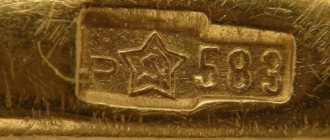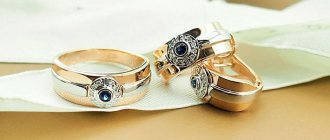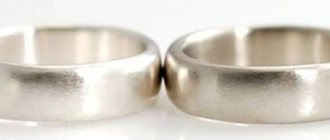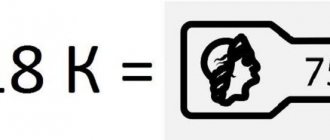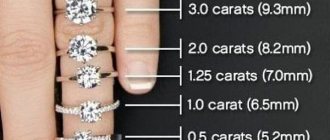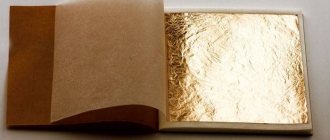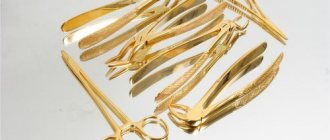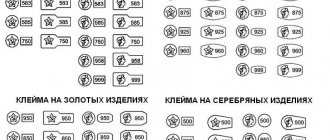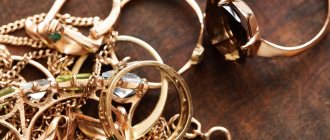Gold is used in various industries. However, the largest share in the use of this metal is occupied by the production of jewelry. Precious things are not made from pure gold, but from alloys with other metals. Thanks to this, the strength of the product can be significantly increased. To figure out what purity 14 karat gold is, you need to do a simple math calculation: divide 14 by 24 and multiply by 1000.
Quality classifications
The metals used for alloys are elements such as tin, copper, zinc, platinum, silver, nickel, palladium, cadmium. The strongest wear-resistant alloys include compounds of gold with silver and copper.
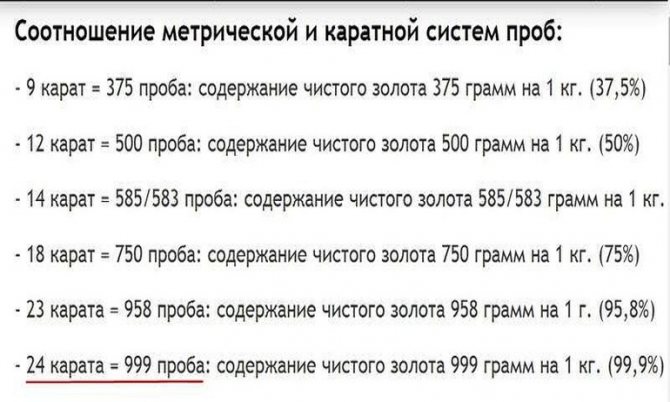
A sample is the quantitative ratio of impurities and pure substance. Precious items are required to be marked with hallmarks that are strictly controlled by the state to guarantee jewelry buyers the quality of the products.
There are two most common systems for measuring the quality of gold:
- metric;
- carat
Metric system
In Russia, the metric classification of gold products is used. The hallmark shows thousandths of the total mass of gold, and values vary from zero to thousands. If a precious item has a purity of 999.99, it means it is made of pure gold.
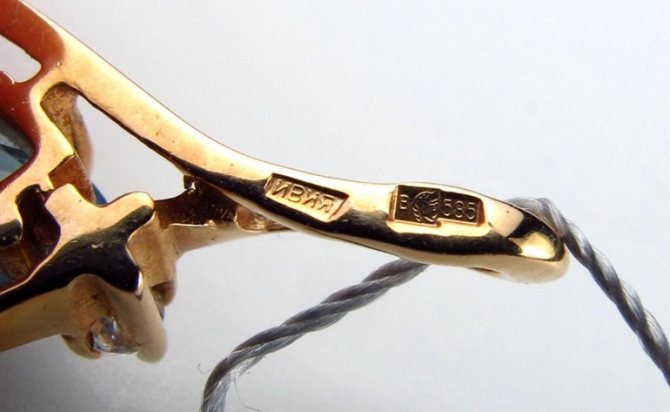
However, such a sample cannot be found in the jewelry industry, since the gold jewelry will be very fragile and can even be broken or cut with a knife.
for jewelry : 375, 585, 950, 750, 500 . The price depends on the value of thousandths. The higher this indicator, the more expensive the gold item is. To convert thousandths to the carat system, you need to divide the sample by 1000 and multiply by 24. For example: 585/1000 * 24 = 14k gold.
To determine what purity of gold is 14k, you need to do the reverse: 14/24 and multiply by 1000. Thus, 585 purity is 14k gold. The hallmark with 585 hallmark is considered a standard in the global and Russian jewelry industry.
Carat hallmark
This classification has become widespread in European countries and the USA. If you buy gold products abroad, they will be stamped with a karat mark. The hallmarks commonly used for jewelry are 9, 14, 18, 10 and 24.

Understanding this system is quite simple: 1 carat means that it contains 1/24 of the mass of the entire alloy. If there are no impurities, then the product has a 24-karat hallmark. Accordingly, 14k means that 14 parts of the product are pure gold, and the remaining 10 are other impurities.
Materials: What is Gold-filled 14K?
As you know, pure gold is a very soft and fragile material. In order for jewelry to retain its appearance and shape for a long time, more durable alloys of gold (solid gold) with other metals (silver, copper, zinc and others) are used. In international practice, the purity of gold is usually determined in carats. 1 carat means that the alloy contains 1 part gold and 23 parts other metals, respectively, 24K is 100% pure gold. 9K alloy contains 37% gold, 14K - 58% (corresponds to our 583 standard), 18K - 75% (750 standard). The most commonly used gold is 10, 12, 14 and 18 karat. Recently, gilded (gold-plated) fittings (meaning various metal parts: beads, locks, fasteners, etc.), coated with gold only from the surface, are increasingly used in jewelry and costume jewelry. This makes them much cheaper while still maintaining the appearance of gold jewelry. Depending on the coating method, such fittings are divided into the following groups: - filled with gold (gold filled) - gilded by galvanic method (gold plated/gold washed/gold finished). The most common type of gilding is electroplating (Gold Plated or GP), i.e. electroplating with a thin layer of gold several microns thick, i.e. strictly speaking - spraying. This coating is weakly attached to the base metal (most often it is brass, copper, sometimes silver), is fragile and short-lived. The minimum gold content for such coatings is not regulated by standards, although some particularly conscientious manufacturers strive to coat their products in several layers. Fittings with galvanic coating are designated by the English abbreviation GP (Gold plated). or GEP (Gold electroplated). Jewelry created using galvanic gold-plated fittings belongs to the costume jewelry category, i.e. “costume” jewelry, which is not recommended to be worn on the body, but only on clothes, because the “hellish” mixture of human sweat and perfume can do what even the strongest chemical reagents are unable to do - quickly ruin even the most durable accessories! A more expensive and high-quality method of gold plating, used in the creation of jewelry and costume jewelry of a higher category (fine jewelry), is a method that, literally translated, sounds like “filled with gold” (Gold Filled or GF). The "gold filling" method consists of creating a gold layer by rolling, rapidly heating together with a base metal substrate (usually brass or copper is used as the base metal, but bronze or alloys can also be used) in an airless environment to a temperature of approximately 900 degrees, and compressing under high hydraulic pressure (approximately 170 atmospheres). The result is a gold coating with a thickness of 8-10 to hundreds of microns, forming a metallurgically alloyed connection with the substrate. Gold-filled fittings are hypoallergenic, more durable than Gold plated and retain their appearance for decades, so purchasing jewelry with such fittings is a fairly reasonable investment. In other words, this is a more economical way to join the world of luxury and wealth that gold represents.
Jewelry colors
Regardless of the standard and karat measurement, gold items can be presented in several colors. Gold happens:
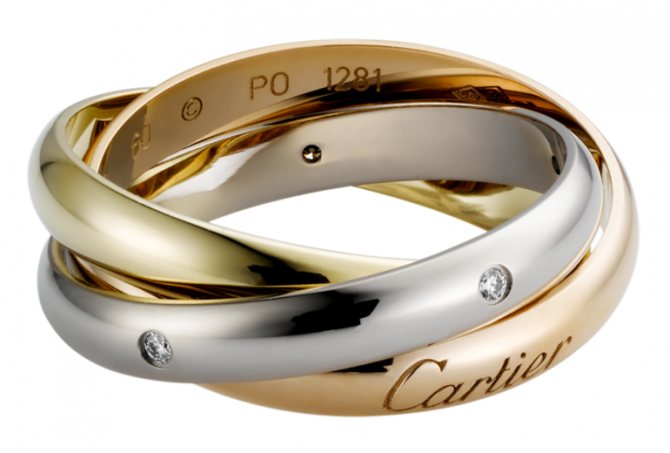
- Red. It is also called pink because it shimmers in pink shades in the light. Copper and silver are added to such products in minute quantities.
- White. This is an alloy of gold and silver, palladium, nickel. White gold is virtually uncontaminated. Alloys with nickel give the product a yellowish tint, and with palladium - a steel one. Some jewelry is coated with radium to give it a noble bluish tint.
- Yellow. This is a silver-copper alloy. This gold has a clear advantage over other colors: softness and ductility, resistance to corrosion. Neg jewelry is sold in huge quantities in boutiques and stores.
Characteristics of 14 karat gold
For 24 carats of this alloy there are 14 carats of pure gold, so high-quality jewelry can be made from it, including those with precious stones. In addition, jewelers add metals to the ligature of such an alloy, which can change the shade of gold. For example, if the impurities are white metals, then this allows you to get beautiful white gold. Also, 14-karat gold can have red, yellow, pink and lemon colors - it all depends on the ratio of the components of the alloy.
Gold, valued at 14 karats, has many benefits. First of all, it has excellent wear resistance, strength and beauty. Today, 1 carat of such gold is valued in Russia in the range of 3500-4500 rubles (in the product). The price per gram of metal in this case is determined by the complexity of the work of the master jeweler and the brand of the jewelry manufacturer.
To choose genuine 14-karat gold, purchase it only at a large jewelry store, which will help you avoid purchasing a fake.
Determination of authenticity
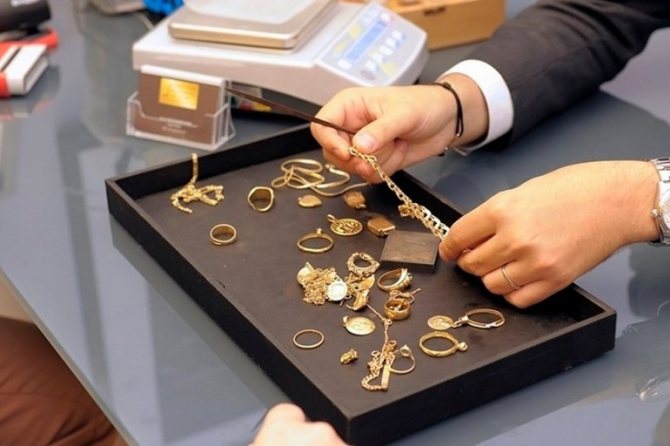
The desire to purchase jewelry at a low price most often ends in great disappointment, since gold cannot be too cheap.
The sample of the State Assay Office is considered a guarantor of authenticity and quality, but some craftsmen have learned to counterfeit jewelry, which entails criminal liability.
When purchasing 14k gold jewelry, a person runs the risk of being deceived. Such products are sold in exotic countries in huge quantities at a price that is significantly lower than Russian jewelry.
They are easy to forge - you can put an imprint with such a carat designation on almost any metal. Unscrupulous sellers do this, and apply gold plating on top. When the deception is revealed, it will be difficult for the tourist to prove anything, so it is better to give preference to domestic products.
At home

The main method for determining the quality of gold is its careful visual inspection. Prints must be clearly visible and even. When examined with a magnifying glass, an image of a woman in a kokoshnik or a star should be visible.
The most common fakes are products made of beryllium bronze (its other name is randol). They bear a mark dating back to Soviet times, which is difficult to distinguish from the present. Randol is almost impossible to distinguish from the original. However, such fakes are found only in simple jewelry, since it is impossible to make complex jewelry from randoli. There are two types of products - men's signets and classic wedding rings.
Copper alloys can be quickly determined at home. They have two distinctive features :
- Clunk. A real precious ring will ring loudly when thrown onto a flat, hard surface.
- Hardness. Gold jewelry has many microscopic scratches and various abrasions on the surface. This can be noticed upon detailed examination of the item. Brass or copper items have a solid shape, they have no selection.
When purchasing woven bracelets and chains, you must definitely pay attention to the connecting ring between the lock and the chain - it must be sealed. All links in the chain must be solid.
You need to carefully examine the joints - there should be abrasions on them, but there cannot be stains of other shades on the original. If the metal in this part is slightly different in color, then this is a clear sign of a fake. When choosing jewelry set with stones, you need to carefully examine the setting. If the inserts are crooked, then the buyer is looking at a fake. In original jewelry, the setting is of high quality, since this operation requires the work of a highly qualified specialist.
Often sellers want to pass off gold plating as a precious metal. In the jewelry industry, gold plating is applied to silver items and their hallmarks are different from the gold standard - 925, 830 or 875. These are silver standards that are not the same as hallmarks on gold jewelry. The prints differ not only in meaning, but also in size and shape. If there is no sample, you can rub the ring with a nail file. The spraying will come off easily after such manipulations.
Chemical methods
With the help of available tools, you can simply determine the quality of jewelry.
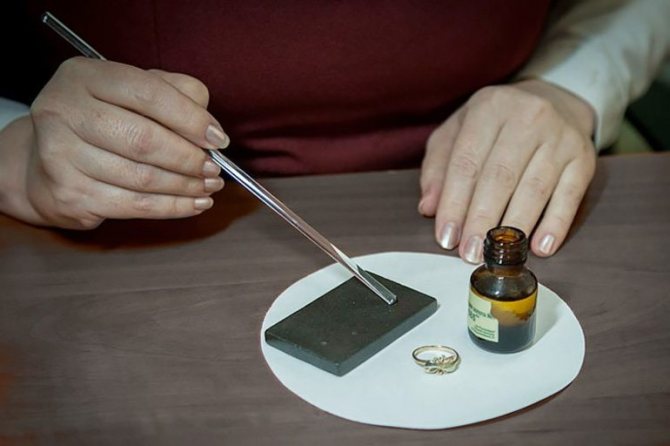
There are several ways:
- With the help of iodine. If you apply it to a gold ring, it will leave a brown mark. For the reaction to occur, the jewelry must be left in contact with the iodine for several minutes. Copper alloys do not react in any way to iodine.
- Nitric acid. This method is suitable for mass verification of jewelry authenticity. This method is the most reliable. You need to apply a drop of nitric acid to the precious item. This can be done using a quartz stick. An item with a 585 stamp will give a reaction within a few minutes, but it will be very weak, and after it a brownish mark will remain on the surface. A violent reaction will immediately occur on a fake, but the mark will be almost invisible.
- Lapis pencil. It can be bought at any pharmacy. You need to wet the product and run a lapis pencil over it. There will be a mark on the gold.
- Magnet. Using a regular magnet it is impossible to reliably determine a fake, but this method can be used as an additional one. Gold will not react to a magnet, but steel jewelry that imitates a platinum product will be attracted to it.
Interesting Facts
Over the entire history of mankind, people have been able to extract more than 200 thousand tons of pure gold from the bowels of the earth. If a geometric figure were cast from it, the result would be a cube the size of a high-rise building.
There are other interesting facts about this metal:
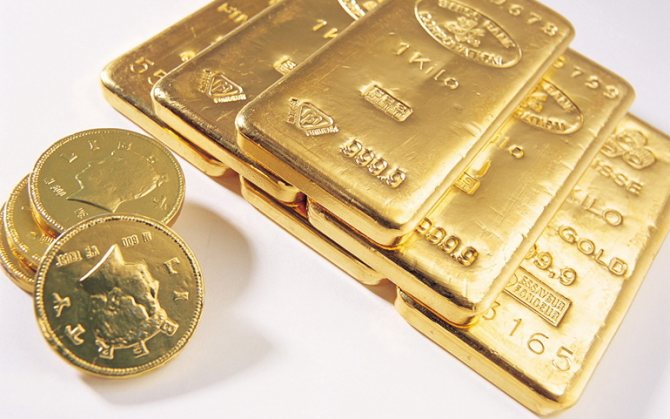
- Most of this gold is contained in the earth's core. If it poured onto the earth's surface, the entire Earth would be covered with a half-meter golden layer! The earth's core contains more of it than the entire world.
- This element is even found in water. Each liter contains from 0.02 to 0.04 milligrams of gold.
- The largest statue, made of precious metal, weighs about 250 tons. According to legend, the goddess Semiramis ordered this item to be made. The statue of the goddess Rhea was made of the purest metal - she sat on a throne and was surrounded by luxurious golden lions. This historical monument has not survived to this day, but it is mentioned in books.
- The largest gold reserves are in the United States - about 8 thousand tons. The second position is occupied by Germany, which contains more than 3 thousand tons of this metal. It is followed by other European countries - Italy and France. China, Japan, Switzerland, as well as Russia and the Netherlands are not far behind them. In India, most of the gold belongs not to the state and authorities, but to ordinary citizens.
- Just 30 grams of pure gold can be used to make a thread 80 km long. It will be much thinner than human hair. This feature is explained by the physical properties of the element - gold is a very viscous and malleable substance.
- The metal is very rare. Every day, steel is cast in the world in the amount in which gold has been mined in the entire history of human existence.
- Gold is used not only in jewelry, but also in the food industry. In some Asian countries, it is added to fruits, baked goods, and various drinks. Gold leaf has been used in the alcohol industry for a long time. This element is added to bottles with particularly expensive spirits.
- During the crisis in 2008, the price of one ounce of metal exceeded 1 thousand dollars. This was the only case ever.
- To make a medal for Olympic champions, only 6 grams of gold are used, since only the outer shell is cast from it.
- The Bible mentions this connection more than 400 times! In the main book there are instructions from the Lord about covering furniture with metal. The gold was presented by one of the wise men as a gift for the baby Jesus.
- Jewelry with a purity lower than 375 is considered non-jewelry and is considered the same as regular costume jewelry.
Experts recommend buying gold only in large, reliable stores. You should not chase cheap products, since high-quality precious metal cannot have a low price.
